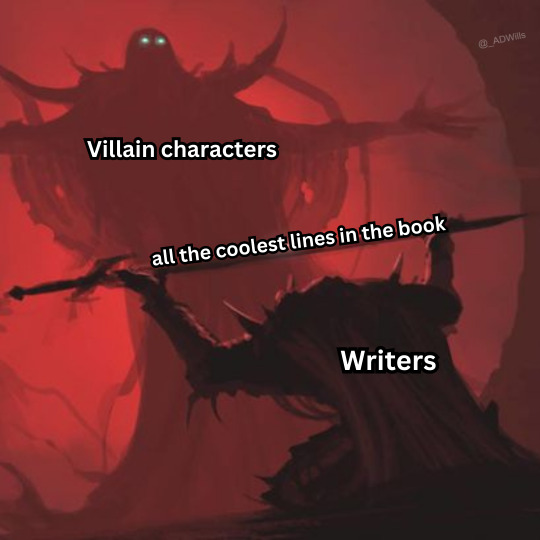Sherlock, Glee, The Vampire Diaries, Once Upon A Time, Gossip Girl this is how it started and now it's a mess > mainblog
Don't wanna be here? Send us removal request.
Text


I think that when she says 'It's you and me, that's my whole world' she refers to her and us, that we are at the concert and we are ready to see her whole world or the eras, songs and choreographies that she wrote and chose for this tour 🫶🏻💗💖✨
@taylorswift @taylornation
19 notes
·
View notes
Text
Ich weiß, die "Walross vs Fee vor der Tür"-Umfrage ist schon ein paar Monate her, aber aus deutscher Sicht ist diese Frage kinda wild.
Wir haben eine ganze fucking Buchreihe darüber, die damit beginnt das ein Typ die Tür aufmacht und ein Känguru davorstehen hat.
Fucking Ludwig XIV könnte bei mir klingeln und ich würde mir nur denken "Ah ja der braucht bestimmt Eier für seine Eierkuchen."
540 notes
·
View notes
Text
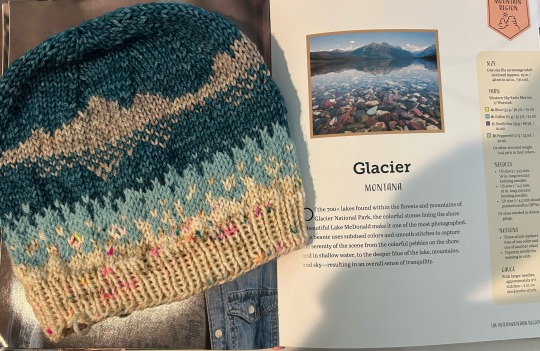
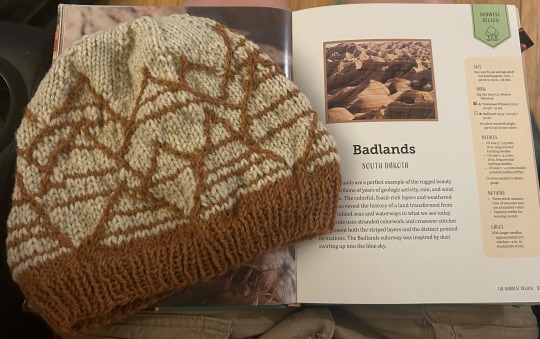



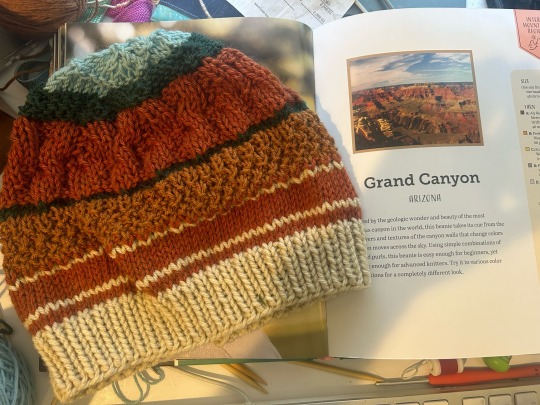
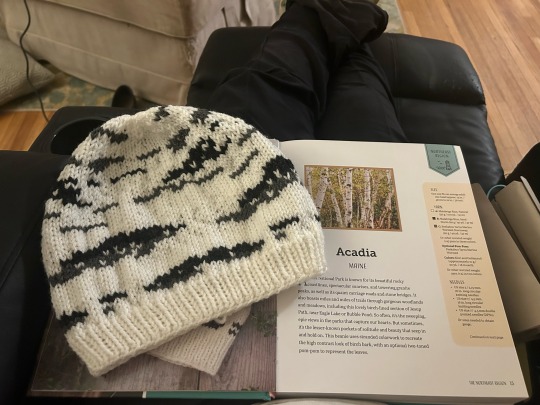
I’ve been knitting my way through this book by making friends gifts of hats they want. Its been great.
8K notes
·
View notes
Text
bei mir ist gerade die erinnerung wieder aufgetaucht, dass wir einen grundschullehrer names herrn hering hatten, der uns erzählt hat, dass er so heißt, weil sein opa ein hering war und dass er selbst sich bei vollmond in einen hering verwandelt. wildes zeug.
227 notes
·
View notes
Text
Destroy the myth that libraries are no longer relevant. If you use your library, please reblog.
189K notes
·
View notes
Text
Physical One-Liners Part III
"Can I take your hand?"
"I fit perfectly in your arms."
"I want to hold you like this forever."
"Can I fall asleep on your shoulder?"
"I want to wrap you up in my arms and make you feel safe."
"Put your head on my lap and sleep a little."
"You're being very needy today with your touches."
"Please tell me I can touch you."
"Sleeping next to you is my personal heaven."
"You hugged me like your personal pillow."
"Maybe I want to use any excuse to be close to you..."
"Have your eyes always been that dark?"
"I feel like you're obsessed with touching me."
"Are you sniffing my hair?"
"Your body feels like home to me."
Part I | Part II
If you like my blog and want to support me, you can buy me a coffee or become a member! And check out my Instagram! 🥰
3K notes
·
View notes
Text
I love how 1 star book reviews are either like a whole analysis of the book and how the plot is bad and the characters are unrealistic and how the author is problematic etc or just "this book sucked lol"
540 notes
·
View notes
Text
My brain whenever I hear that Cavill is the Witcher and cannot be replaced:

164 notes
·
View notes
Text



gale romance + greetings in act ii
bonus:

1K notes
·
View notes
Text
Exploring Character Backstory
1. Start with the essentials: Begin by outlining the basic information about your character's past, such as their family background, upbringing, education, and early experiences. Consider their cultural, social, and economic background, as these factors can shape their worldview and values.
2. Identify key events and milestones: Determine significant events or milestones in your character's life that have had a profound impact on them. These could include positive or negative experiences, such as the loss of a loved one, a major achievement, a traumatic incident, or a life-changing decision. These events help shape your character's personality, fears, and aspirations.
3. Examine formative relationships: Explore the relationships your character has had with their family, friends, mentors, or romantic partners. How have these relationships influenced them? What role models or influences have shaped their values, beliefs, and behavior? Relationships can provide insight into your character's vulnerabilities, strengths, and emotional attachments.
4. Dig into their beliefs and values: Understand what your character believes in and values. Examine their moral compass, political views, religious beliefs, or philosophical outlook. Consider how their beliefs might clash or align with the conflicts they encounter in the story. This will create depth and authenticity in their character development.
5. Uncover secrets and hidden aspects: Delve into your character's secrets, hidden desires, or aspects of their past that they prefer to keep hidden. Secrets can create internal conflicts, fuel character growth, and add intrigue to the story. They can also reveal vulnerabilities or flaws that make your character more relatable and complex.
6. Consider the impact of societal factors: Explore how societal factors such as gender, race, class, or historical context have influenced your character's experiences and identity. These factors can shape their struggles, opportunities, and perspectives. Understanding the societal context in which your character exists adds layers of depth to their backstory.
7. Connect the backstory to the main story: Once you have explored the character's backstory, identify how it relates to the main story. Determine how their past experiences, relationships, or traumas influence their present motivations, conflicts, and goals. This connection will ensure that the backstory serves a purpose in the narrative and contributes to the character's growth.
8. Use backstory selectively: While backstory is essential for understanding your character, avoid excessive exposition or information dumping. Introduce elements of the backstory gradually, through dialogue, memories, or subtle hints. This helps maintain reader interest and allows the character's past to unfold organically throughout the story.
Remember, not all aspects of the character's backstory need to be explicitly mentioned in the narrative. It's important to choose and reveal elements that have the most significant impact on the character's present circumstances and development.
5K notes
·
View notes
Text
Mastering the Art of Plotting a Well-Paced Novel
In this post, I'll delve into the essential skill of pacing, and explore how pacing can make or break your novel. By understanding the impact of pacing on your story's flow and tension, you will be able to create a well-paced narrative that keeps readers engaged and turning the pages. I'll be unlocking the secrets of pacing and learn how to master the art of plotting a well-paced novel.
Pacing is a critical element in storytelling that determines the speed and rhythm at which events unfold in your novel. It encompasses the tempo, timing, and sequencing of scenes, dialogue, and action. Proper pacing ensures that your story moves along smoothly, building suspense and maintaining readers' interest.
Imagine
Imagine reading a book where everything happens at a breakneck pace, with no time to pause and absorb the crucial moments. Alternatively, consider a book where the plot drags on, leaving readers disengaged and tempted to put the book down. Both scenarios highlight the importance of pacing.
For aspiring writers and authors, mastering the art of pacing is key to creating a captivating story that resonates with readers. It involves skillfully balancing action scenes with quieter moments, strategically revealing information, and strategically varying the pace to maintain tension and anticipation.
Throughout this blog post, I'll help you explore various techniques, tips, and strategies to help you unlock the secrets of pacing and plot a well-paced novel. Whether you're just starting your writing journey or looking to refine your storytelling skills, this guide will provide you with valuable insights and practical advice to help you develop a story that keeps readers hooked from beginning to end. So, let's dive in and uncover the mysteries of pacing.
Setting the Stage: The Power of Pacing
Pacing is the rhythm and tempo at which your story unfolds. It's like music for your reader's mind, setting the tone and guiding their emotions. It determines the speed at which events occur and plays a crucial role in maintaining reader interest. Think of pacing as the heartbeat of your novel, keeping your audience eagerly turning the pages.
But why is pacing so important in storytelling? Well, imagine reading a book where nothing exciting ever happens, or one where everything is rushed and there's no time to breathe. It's like having a roller coaster with no thrilling drops or a movie without any suspenseful moments. Pacing is what keeps your readers engaged and invested in your story.
One of the key aspects of pacing is its ability to increase tension. By carefully controlling the speed at which events unfold, you can build anticipation and leave your readers on the edge of their seats. Whether it's a nail-biting chase scene or a climactic confrontation, pacing can make these moments all the more exhilarating.
Pacing also allows for crucial moments to be savored. It gives your readers the chance to fully immerse themselves in the emotions and details that matter. By slowing down during these pivotal scenes, you can create a deeper connection between your characters and your audience, making the experience more impactful.
Additionally, pacing can be used to maintain tension throughout your story, even during quieter moments. By varying the speed of your narrative, you can keep your readers engaged and curious about what's to come. This ebb and flow of tension will keep them hooked from start to finish.
So, by understanding the power of pacing, you will be equipped to create a well-paced novel that captivates your readers. Stay tuned as we dive deeper into specific techniques for creating suspense and savoring crucial moments in the upcoming sections. Your journey to mastering the art of plotting a well-paced novel starts here!
Speeding Things Up: Techniques for Creating Suspense
Suspense is a powerful tool for keeping readers on the edge of their seats. As a writer, you have the ability to control the pace of your novel and create nail-biting suspense that will captivate your readers. In this section, we will explore techniques for speeding up the pace of your story and intensifying the suspense.
One effective technique is to use short, snappy sentences. By keeping your sentences concise and to the point, you can create a sense of urgency and make the action feel more immediate. This will keep your readers engaged and eager to find out what happens next.
Another technique to consider is the use of cliffhangers. Ending a chapter or section with a cliffhanger leaves your readers hanging and desperate to know what happens next. This can be achieved by introducing a sudden twist, revealing a shocking secret, or leaving a crucial question unanswered. The suspense created by these cliffhangers will keep your readers turning the pages.
Plot twists are also a great way to speed up the pace and create suspense. By introducing unexpected turns of events, you can keep your readers guessing and on the edge of their seats. These twists can be major revelations or small surprises that add intrigue to your story.
Lastly, foreshadowing is a technique that can heighten anticipation and create suspense. By dropping subtle hints or clues about future events, you can build tension and make your readers eager to uncover the truth. Foreshadowing can be done through dialogue, descriptions, or even symbolic elements in your story.
By mastering these techniques, you will be able to weave a thrilling narrative that keeps readers hooked from the first page to the last. So, grab your pen and get ready to speed up the pace of your novel, creating suspense that will leave your readers breathless.
Slowing Down: Savoring Crucial Moments
While it's important to maintain a fast pace in your novel, it's equally crucial to slow down and allow readers to savor crucial moments. These are the scenes that make your story come alive, the moments that leave a lasting impact on your readers. By creating breathing room in your narrative, you give readers the opportunity to fully immerse themselves in poignant scenes and important character development.
One effective way to slow down the pace is through the use of vivid descriptions. Paint a picture with your words, allowing readers to see, hear, smell, and feel the world you've created. By providing rich sensory details, you transport your readers into the heart of the scene, making it more memorable and engaging.
Internal monologues are another powerful tool for slowing down the pace. These moments of introspection allow readers to delve deeper into your characters' thoughts and emotions. By revealing their innermost desires, fears, and conflicts, you add depth and complexity to your story.
Reflective moments also play a crucial role in savoring crucial moments. These are the pauses in the action where characters contemplate their choices, reflect on their past, or ponder the future. These moments of introspection not only add depth and texture to your story but also give readers a chance to connect with your characters on a deeper level.
By finding the right balance between fast-paced action and slower, introspective scenes, you will create a well-rounded narrative that captivates readers on multiple levels. So, take the time to slow down and savor those crucial moments in your novel. Your readers will thank you for it.
The Art of Variation: Maintaining Tension Through Pacing
In this section, we will dive deeper into the art of variation in pacing and how it can maintain tension throughout your novel. As a writer, it's crucial to understand that pacing is not just about maintaining a consistent speed throughout your story. It's about strategically alternating between faster and slower-paced scenes to create a rollercoaster effect that keeps readers engaged and guessing.
By varying the pace of your narrative, you can effectively build and release tension, keeping readers on the edge of their seats. Faster-paced scenes filled with action, suspense, and conflict propel the story forward, while slower-paced scenes allow for character development, introspection, and reflection. This ebb and flow of pacing creates a dynamic reading experience that captivates your audience.
Strategic placement of high-intensity scenes is also key to maintaining tension. These scenes should be strategically scattered throughout your novel, serving as climactic moments that heighten the stakes and keep readers invested. However, it's equally important to provide moments of respite, where the pace slows down, allowing readers to catch their breath and process the events unfolding.
By mastering the art of variation in pacing, you can create a well-paced novel that holds readers' attention from start to finish. So, as you plot your story, remember to carefully consider the pacing of each scene, alternating between faster and slower moments, strategically placing high-intensity scenes, and providing moments of respite. This will ensure that your readers are taken on a thrilling and immersive journey through your narrative.
Beyond Words: Enhancing Mood and Atmosphere
Pacing is not just about the words on the page; it has the power to enhance the mood and atmosphere of your narrative. By understanding how the speed of pacing can influence the reader's emotional experience, you can take your storytelling to the next level.
One technique for using pacing to set the tone is to vary the speed of your narrative. By slowing down during introspective moments or important scenes, you can create a sense of depth and allow readers to fully immerse themselves in the atmosphere you're trying to convey. On the other hand, speeding up the pacing during action-packed sequences can generate excitement and keep readers on the edge of their seats.
Pacing can also be used to create tension. By gradually increasing the speed of your narrative, you can build anticipation and make readers feel a sense of urgency. Conversely, slowing down the pacing can create a sense of unease or suspense, leaving readers hanging on every word.
Furthermore, pacing can evoke specific emotions. By carefully choosing the speed at which events unfold, you can elicit feelings of joy, sadness, fear, or even nostalgia. Experimenting with pacing as a tool to guide readers through important plot points and evoke desired emotional responses will add depth and richness to your storytelling.
Remember, pacing goes beyond words. By mastering the art of pacing, you can enhance the mood and atmosphere of your novel, captivating readers and keeping them engaged from beginning to end.
Plotting with Purpose: Pacing and Story Structure
Pacing is not just about speed; it's also about structuring your story in a way that keeps readers hooked. In this section, we will delve into how pacing works hand in hand with story structure. We will explore how to strategically escalate and release tension, ramping up the pace during pivotal moments and allowing for quieter moments of reflection. By aligning your story structure with the pacing of your novel, you will create a cohesive and engaging reading experience that leaves a lasting impact on your audience.
To plot with purpose, it's important to understand the relationship between pacing and story structure. Your story structure provides the framework for your plot, while pacing determines the rhythm and tempo of your narrative. By carefully crafting your story structure, you can strategically place high-tension moments and slower-paced scenes to create a dynamic reading experience.
Consider the rising action, climax, and resolution of your story. These key plot points should align with the pacing of your novel. As you approach the climax, the pace should quicken, building tension and excitement. This is the moment where readers are on the edge of their seats, eagerly turning pages to find out what happens next. After the climax, the pace can gradually slow down, allowing for reflection and resolution.
By understanding the relationship between pacing and story structure, you can create a well-paced novel that keeps readers engaged from beginning to end. So, as you plot your own story, remember to consider the purpose behind each scene and how it contributes to the overall pacing of your narrative.
Conclusion
Mastering the art of pacing is a journey that requires practice and experimentation. As a writer, you have the power to control the ebb and flow of your story, guiding readers through a rollercoaster of emotions and keeping them engaged until the very end.
By understanding the impact of pacing on your story's flow, tension, and emotional resonance, you will be able to create a well-paced novel that keeps readers hooked from start to finish. Whether you choose to speed things up to create suspense or slow down to savor crucial moments, pacing is a tool that can enhance the overall reading experience.
Remember, pacing is not just about the speed of your story. It's about finding the right balance, the perfect rhythm that suits your narrative. Experiment with different techniques, play with the pacing of your scenes, and pay attention to how it affects the overall structure and tension of your novel.
So go ahead and unlock the secrets of pacing, and embark on the exhilarating adventure of plotting a well-paced novel that captivates readers and leaves a lasting impression. Happy writing!
1K notes
·
View notes
Text
Creative misfortunes for characters
Identity Crisis: Have your character lose their memory, forcing them to rediscover their true self and past.
Betrayal by a Loved One: A close friend or family member betrays the character's trust, leading to emotional turmoil and inner conflict.
Physical Transformation: Give your character a physical ailment or transformation that they must come to terms with, such as sudden blindness, a debilitating illness, or turning into a different species.
Unrequited Love: Make your character fall deeply in love with someone who doesn't reciprocate their feelings, causing heartache and a quest for self-discovery.
Financial Ruin: Strip your character of their wealth and privilege, forcing them to adapt to a life of poverty and face the harsh realities of the world.
False Accusation: Have your character falsely accused of a crime they didn't commit, leading to a desperate quest to clear their name.
Natural Disaster: Place your character in the path of a devastating natural disaster, such as a hurricane, earthquake, or tsunami, and force them to survive and rebuild.
Loss of a Sense: Take away one of your character's senses (e.g., sight, hearing, taste) and explore how they adapt and cope with this profound change.
Forced Isolation: Trap your character in a remote location, like a deserted island, and make them confront their inner demons while struggling to survive.
Haunted Past: Reveal a dark secret from your character's past that comes back to haunt them, threatening their relationships and well-being.
Time Travel Consequences: Send your character back in time, but make them inadvertently change a crucial event in history, leading to unintended consequences in the present.
Psychological Breakdown: Push your character to the brink of a mental breakdown, exploring the complexities of their psyche and their journey towards recovery.
Unwanted Prophecy: Have your character be the subject of a prophecy they want no part of, as it places them in grave danger or disrupts their life.
Loss of a Loved One: Kill off a beloved character or make your protagonist witness the death of someone close to them, igniting a quest for revenge or justice.
Incurable Curse or Disease: Curse your character with an incurable ailment or supernatural curse, and follow their journey to find a cure or accept their fate.
Sudden Disappearance: Make a character disappear mysteriously, leaving the others to search for them and uncover the truth.
Betrayal of Morals: Force your character into a situation where they must compromise their ethical values for a greater cause, leading to moral dilemmas and internal conflict.
Loss of a Precious Object: Have your character lose a cherished possession or artifact that holds sentimental or magical significance, setting them on a quest to recover it.
Political Intrigue: Place your character in a position of power or influence, then subject them to political intrigue, manipulation, and power struggles.
Existential Crisis: Make your character question the meaning of life, their purpose, and their place in the universe, leading to a philosophical journey of self-discovery.
Remember that misfortunes should serve a purpose in your story, driving character growth, plot development, and thematic exploration.
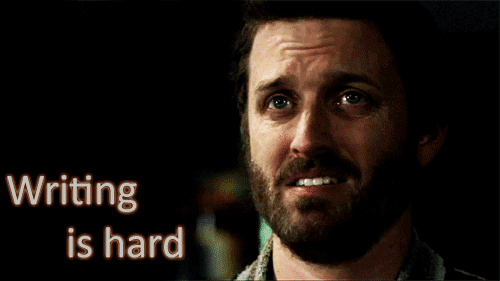
3K notes
·
View notes
Text
how to come to the end of your story
always consider their personality. you can't change their character again. they may have developments and changes, but their base has to remain solid. deep down, they are still the same person, even if they go through traumatic changes or witness drastic things. they have the same foundation.
their appearance. if they have changes in appearance throughout the book, don't scatter the description like one would normally do. lump it all into one sectionㅡ like, after a big fight, they look in the mirror or see their reflection in a window, scarred and bloody. then you can take the time to list any drastic changes in appearance.
give them something special and unique. it could reflect something about you that is special and unique, like an accent or a habit or something in their appearance, or something peculiar that they like that developed throughout the book or series
they don't always have to have a partner.
it doesn't always have to be a happy, resolved ending.
give them a memento or a token of their journey, the big adventure throughout the story. it could be like Katniss Everdeen's mockingjay pin. it could be a dog or an adopted child, or any kind of animal or jewelry. bracelets and rings are always good.
always good to end the setting where they started, where the whole journey began, where the adventure unfolded
you can do the cliffhanger (honestly one of my favorites) if you are doing a series. hunger games had me down bad, it's a great example though.
I REALLY don't recommend this one. the "married significant other and ended the story with the house setting with two children, happily ever after, all conflicts resolved, nothing will ever be wrong again" and then "oh never mind the world is in danger again, entrust kids to significant other and save the world, again". please. it's up to you, but it's not fun to read and the sequential book will always be withering.
that's it, hoped it helped
13 notes
·
View notes




